I am in my office. The phone rings. I answer the call. It is Elling on a bad cellphone line. All I can hear are bits of excited words, with shouts of joy in the background. Then the line clears: “There are hundreds of them. Hundreds!” The field crew had found a new site with a large number of scaring sticks. Scaring sticks?
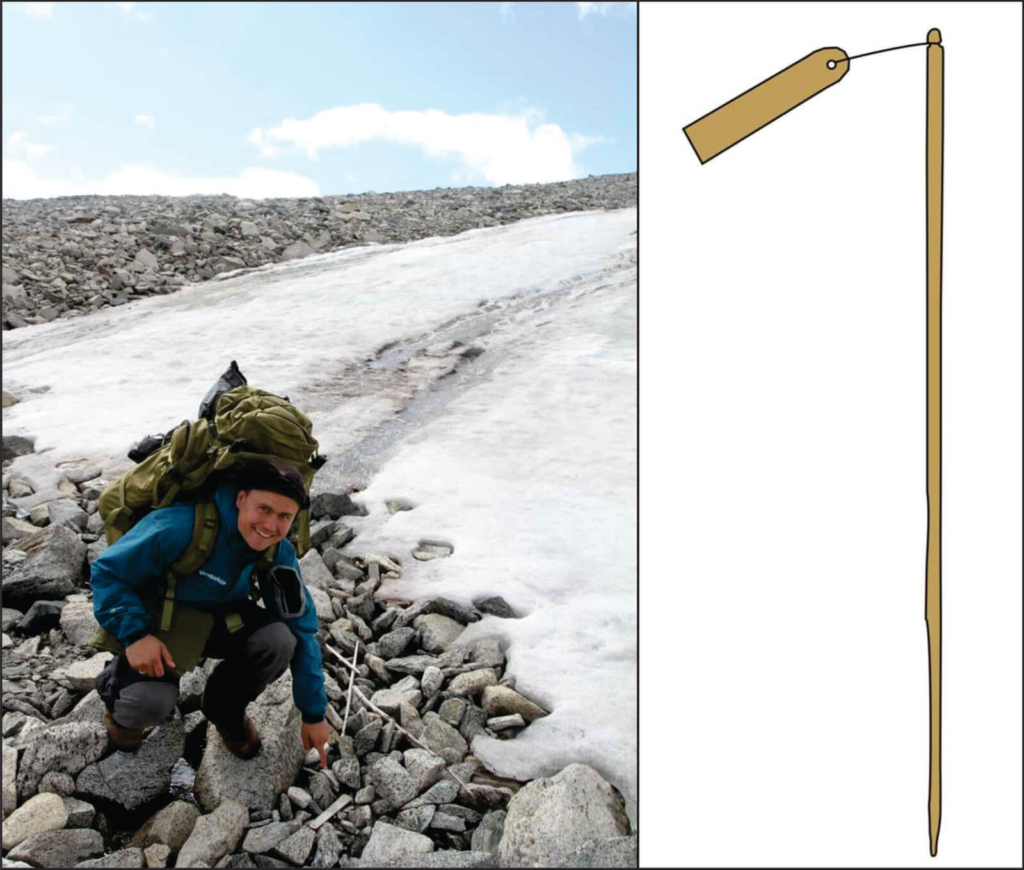
A scaring stick is a c. 1 m long wooden stick, which has a light, movable object attached to the top, for instance a thin wooden flag. Scaring sticks are the most common finds from the ice in Oppland, with more than one thousand items recovered. On some ice sites they appear in the hundreds, on other sites there are just a few. When they are well preserved, all elements of the scaring sticks is preserved – the stick (with a furrow at the top and a pointed end), a string (often made from wool) and a wooden flag. Scaring sticks can be made in different ways, but the basic principle remains the same: a thin stick with a movable object attached to the top.
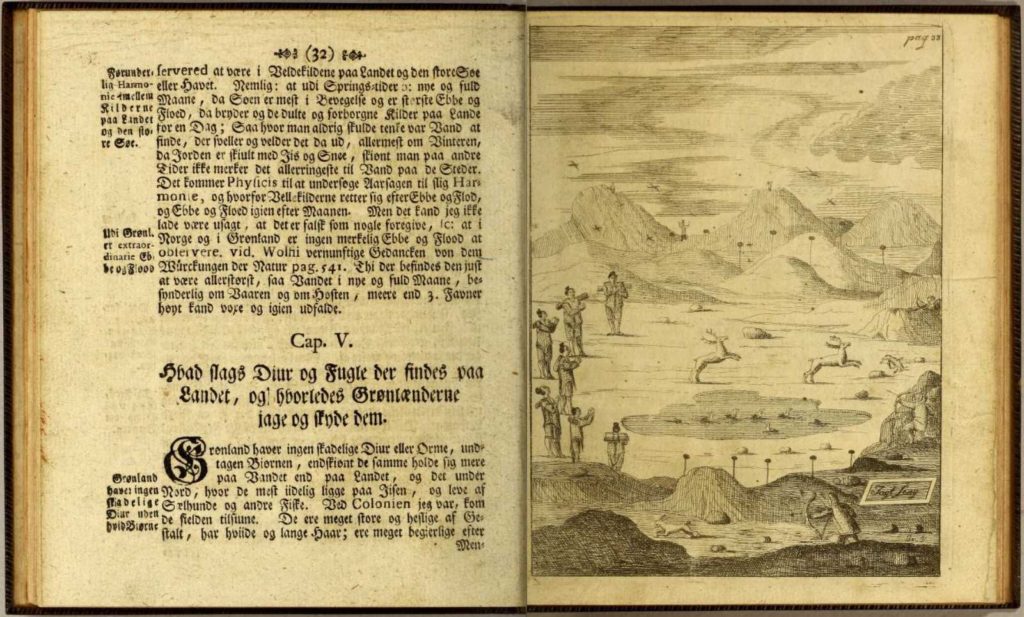
The scaring sticks in Oppland are found melting out of the ice together with arrows. The context shows that they were used in connection with reindeer hunting, but how? There are no local sources to shed light on this. Luckily such an ethnographic source exists elsewhere – more precisely Greenland. In Hans Egede’s book on Greenland, published in 1741, there is a beautiful illustration illuminating this question. It shows how the inuit used scaring sticks placed in lines to control the movement of the reindeer. The key point here is that reindeer are very sensitive animals and tend to shy away from human-like silhouettes or moving objects. Remember, we are way above the treeline, and any moving or human-like object was perceived by the reindeer to be potentially dangerous. The ancient hunters knew this, and they used their intimate knowledge of the natural behaviour of reindeer to lead the animals to good hunting spots by way of raised stones or lines of scaring sticks.
On hot days, the reindeer will seek relief from pestering insects by moving unto ice and snow. They leave their grazing grounds when the heat rises, and head for the ice. This was also the case in the past. The challenge for the ancient hunters was getting close enough for an arrow shot, without prematurely revealing themselves to the reindeer. Based on the available evidence, the shooting distance was probably no more than 10-20 m. Getting this close was difficult in open terrain. The odds could be increased by blocking part of the access to the ice with the help of scaring stick lines and leading the reindeer closer to the hidden hunters.
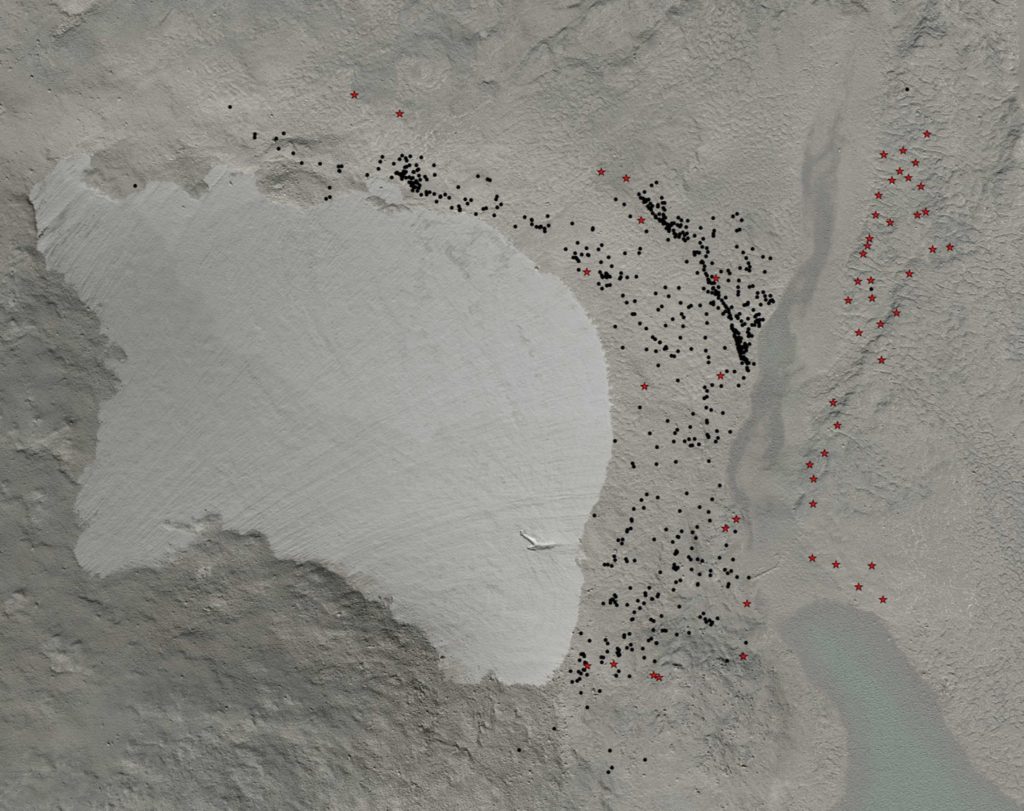
Exactly how this was done can be hard to understand now, as many of the lost scaring sticks have been displaced by meltwater. The size of the ice has also varied over time, changing the local topography. The Juvfonne ice patch, however, provides a good example of the use of scaring stick lines to block the natural access route to the ice. One line of scaring sticks is still visible in the finds plot, but the large number of scaring sticks found elsewhere within the lichen-free zone indicate that there had been many more such lines through time.
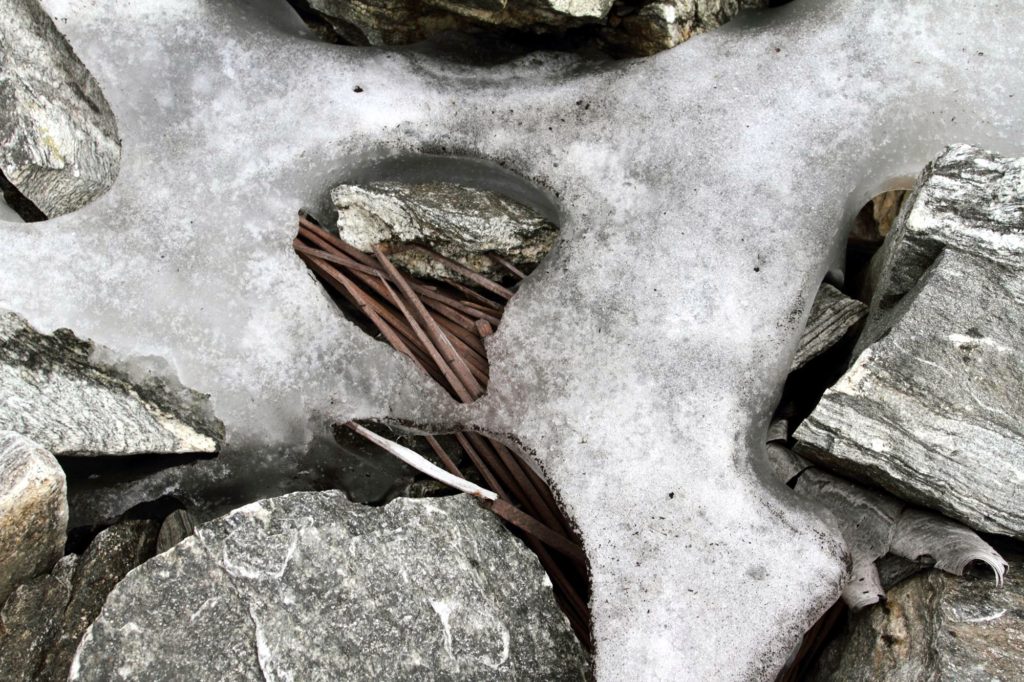
There are a couple of examples of caches of scaring sticks melting out of the ice. Why would the hunters leave behind such caches? One possible and straightforward explanation is that these caches represent the remaining scaring sticks after the line(s) had been placed. Just as a soccer coach would do today – the kegs are placed in a line to delimit the playing field, and the extra kegs are placed on top of each other at the end of the line.
The next question is why they were not retrieved? It seems unlikely that they were left deliberately so close to the ice over winter, as the hunters must have known from experience that the size of the snow cover varied considerably from year to year. More likely the caches were left intentionally at the end of the scaring stick line with the idea of recovering them together with the sticks in the line, when the hunt was over. This didn’t happen. As a parallel phenomenon, we can see from the Juvfonne site and other sites, that long lines of scaring sticks were also lost in the snow, never to be recovered by the hunters. Why?
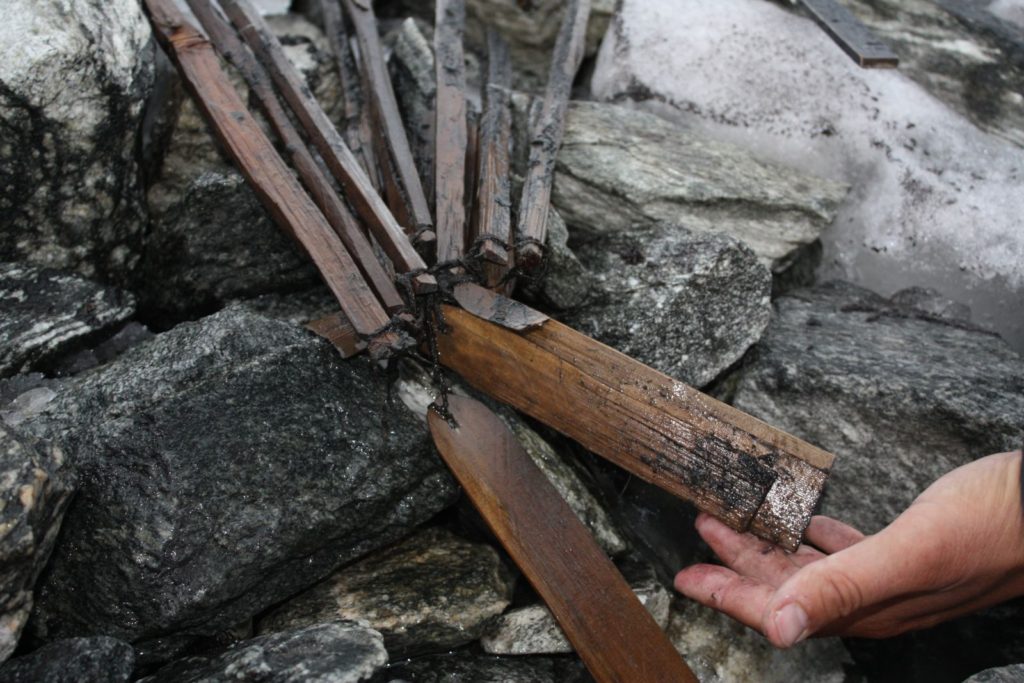
While the occasional loss of single scaring sticks can be easily explained by the scaring stick simply tipping over and getting lost in the snow, this can hardly have been the case with the scaring stick lines and caches. The hunters must in some way have been hindered from recovering the scaring sticks. We know that the main hunting season at the ice was July and August. An intriguing possibility is that there was a large and unexpected snowfall during the hunting period, and no subsequent melt. If this was the case, it also appears likely that there was no melt in the next couple of summers, otherwise the scaring sticks would probably have been recovered then. Is there a connection to sudden climate change? Maybe, but this remains speculative.
Scaring sticks are known from Oppland and Møre and Romsdal counties in Norway. The Oppland finds have been dated to the Iron Age, with the majority of scaring sticks dated to the Migration Period (AD 400-570). As mentioned above, they are known ethnographically from Greenland. There is also information that scaring sticks were used in Siberia as well. So they appear to be a circumpolar phenomenon, albeit with the exception of North America outside Greenland.
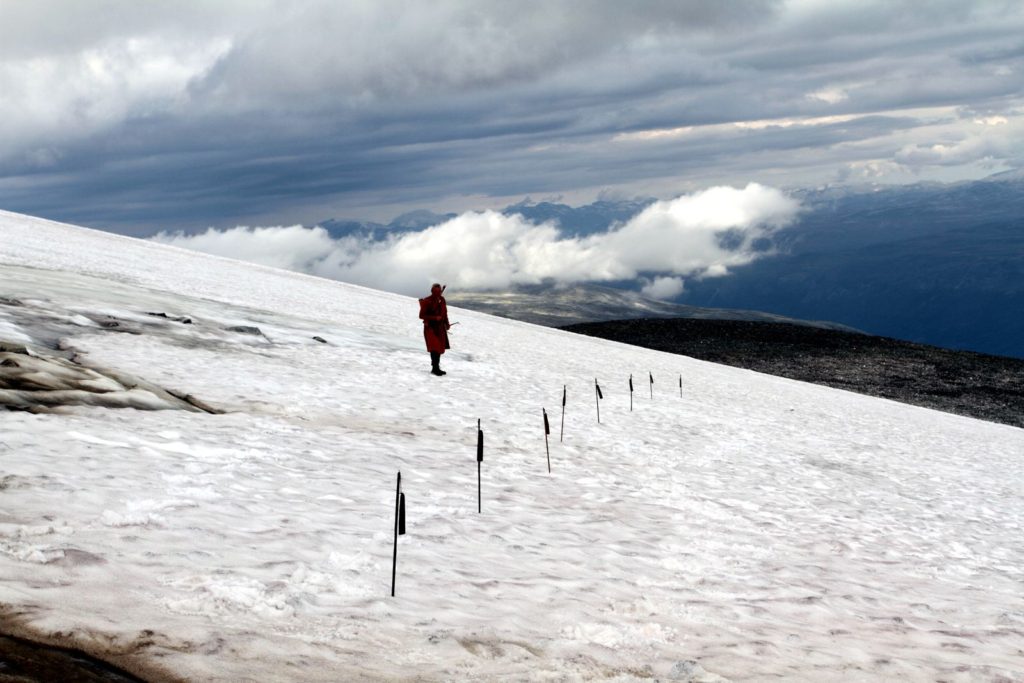
Scaring sticks were invaluable equipment for the reindeer hunters; a testimony to their great hunting skill and intimate knowledge of reindeer behaviour. To the reindeer, the blocking line of scaring sticks represented a thin line between life and death. If the reindeer had crossed the line, they would have reached the safe haven of the ice. But it was not to be.
